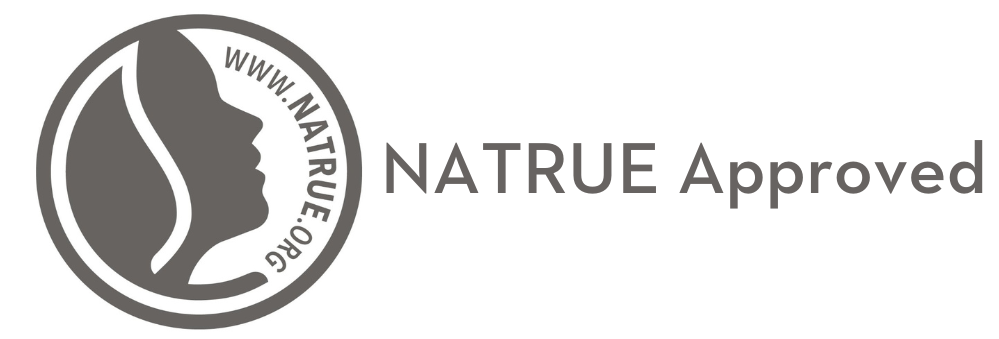
Behind the Label: What NaTrue Certification Means for Your Beauty Routine
Share
The NaTrue organic certification process, specifically designed for natural and organic cosmetics, is a detailed and rigorous procedure ensuring products meet high natural and organic content standards. Below is an in-depth look at the steps involved in obtaining NaTrue certification.
Understanding NaTrue Standards
Before applying for NaTrue certification, it is essential to understand the standards and requirements thoroughly. NaTrue has specific criteria for natural and organic cosmetics, which are categorized into three levels:
- Natural Cosmetics: Focuses on high levels of natural ingredients, with limited, approved nature-identical substances.
- Natural Cosmetics with Organic Portion: Requires a higher percentage of organic ingredients compared to the first level.
- Organic Cosmetics: The strictest level, demanding the highest percentage of organic ingredients.
- Pre-Certification Preparation
2.1. Familiarization with NaTrue Criteria
- Ingredient Selection: Ensure that the ingredients used in your products comply with NaTrue's approved list. This includes verifying that all raw materials meet the required natural or organic status.
- Formulation Review: Evaluate your product formulations to ensure they adhere to the standards for the desired certification level (natural, natural with organic portion, or organic).
2.2. Supply Chain and Sourcing
- Traceability: Establish a robust traceability system for all raw materials. This includes documentation proving the organic status of ingredients if applying for a higher level of certification.
- Supplier Compliance: Work with suppliers who can provide documentation that their materials meet NaTrue standards. This may involve obtaining certificates of origin, organic certification documents, or detailed specifications.
Selecting a Certification Body
- Choosing a Certifier: NaTrue certification is conducted by third-party certification bodies accredited by NaTrue. Research and select a certifier with experience in NaTrue standards.
- Application Submission: Apply to the chosen certification body, including details of the products, formulations, and manufacturing processes.
Documentation and Record-Keeping
4.1. Product Information File (PIF)
- Comprehensive Dossier: Prepare a Product Information File for each product. This file must include detailed information on the product's formulation, ingredient sourcing, manufacturing process, and other relevant details.
- Ingredient Documentation: Include documentation proving each ingredient meets the natural or organic criteria. This may involve providing supplier certifications, Material Safety Data Sheets (MSDS), and certificates of analysis.
4.2. Manufacturing Practices
- Good Manufacturing Practices (GMP): Ensure that the manufacturing process adheres to Good Manufacturing Practices (GMP), which are required for NaTrue certification. This includes maintaining clean facilities, properly training staff, and implementing quality control measures.
- Batch Records: Keep detailed records of each batch produced, including the quantities of ingredients used and the processes followed.
On-Site Inspection and Audit
5.1. Pre-Inspection Review
- Document Review: Before the on-site inspection, the certification body will review the submitted documents, including PIFs, ingredient lists, and any additional required information.
- Preparation: Ensure all documentation is complete and up-to-date—the more organized and thorough the documentation, the smoother the inspection process.
5.2. On-Site Audit
- Facility Inspection: An auditor from the certification body will visit the manufacturing site to verify that all practices comply with NaTrue standards. This includes checking the cleanliness, storage, and handling of raw materials and finished products.
- Process Verification: The auditor will observe the production process to ensure it aligns with the documented procedures and complies with NaTrue's natural or organic requirements.
- Review of Records: The auditor will review records, including batch records, ingredient sourcing, and GMP compliance.
Inspection Report and Certification Decision
6.1. Inspection Report
- Detailed Findings: The inspector will compile a report detailing their findings after the on-site audit. This report will include any non-compliance issues or areas that require improvement.
- Corrective Actions: The certifying body may request corrective actions if any issues are identified. These must be addressed before certification can be granted.
6.2. Certification Decision
- Review by Certification Committee: The certifying body's committee will review the inspection report and all related documentation. They will determine whether the product meets the requirements for NaTrue certification.
- Certification Granted: If the product meets all the criteria, the certifying body will issue the NaTrue certification. The product can then carry the NaTrue label, indicating its compliance with natural and organic standards.
Post-Certification Requirements
7.1. Ongoing Compliance
- Annual Inspections: To maintain NaTrue certification, the company must undergo regular inspections, typically annually, to ensure continued compliance with the standards.
- Record Maintenance: Continue maintaining and updating records, including any changes to formulations, suppliers, or manufacturing processes.
7.2. Product Labeling
- NaTrue Label Usage: Once certified, the product can display the NaTrue label, which indicates the level of certification (natural, natural with organic portion, or organic). Ensure that the label is used correctly and in accordance with NaTrue's guidelines.
7.3. Continuous Improvement
- Staying Updated: Stay informed about any changes in NaTrue standards or regulations. Continuous improvement in product formulation and production practices can help maintain certification and potentially achieve higher levels of certification in the future.
Conclusion
- The NaTrue organic certification process is thorough, ensuring that only products meeting strict natural and organic criteria can carry the NaTrue label. By following this process, companies can give consumers confidence in the authenticity and quality of their natural and organic cosmetic products.
The NaTrue organic certification process, specifically designed for natural and organic cosmetics, is a detailed and rigorous procedure ensuring products meet high natural and organic content standards. Below is an in-depth look at the steps involved in obtaining NaTrue certification.
